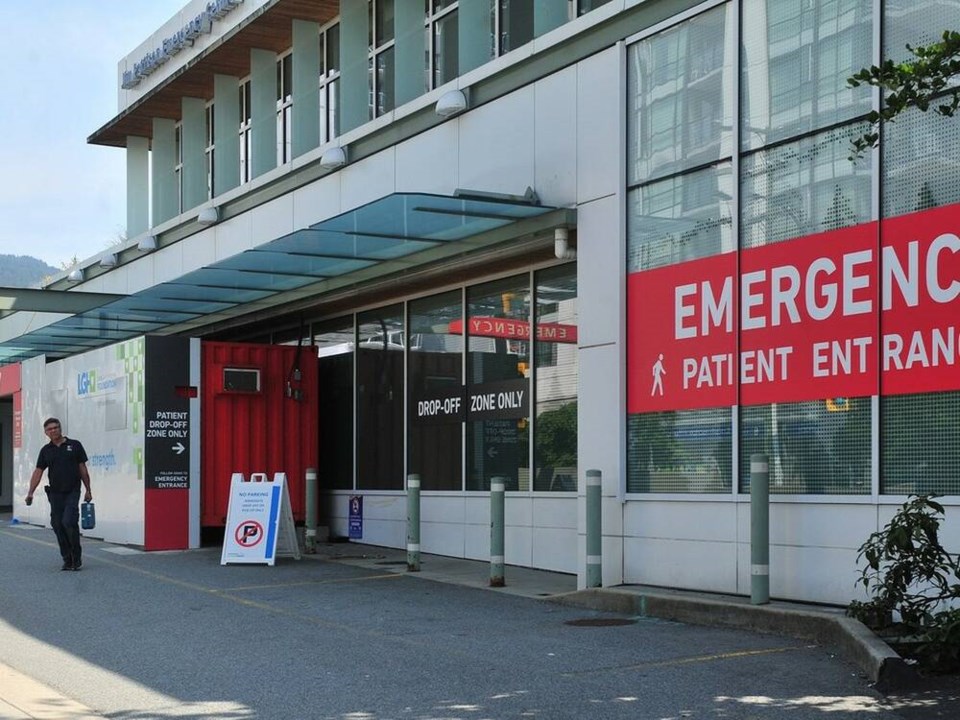The province should prioritize investments that protect critical infrastructure from disruptions caused by extreme heat after hospitals became dangerously hot and had critical equipment failures during the 2021 heat dome, according to a report commissioned by the B.C. government.
The investments include building electricity systems that are resilient to rapidly rising demand, recommends the new report, The Case for Adapting to Extreme Heat: Costs of the 2021 B.C. Heat Wave, authored by the non-profit Canadian Climate Institute.
While there were no widespread power failures, local heat-related electrical breakdowns suggest the potential for major system disruption, says the report. Not only will this have major economic implications for utilities and businesses, but it creates the risk that air conditioners, heat pumps, chillers and fans will not have the power to run when people need them most, said the report’s authors.
“The challenge of adapting to climate change overall is changing our mindset, recognizing that the things that worked in the past may not work in the future,” report co-author Ryan Ness said.
He said the B.C. experience in 2021 — where health costs and the value of lost lives totalled in the billions-of-dollars — has lessons for the rest of the country.
The report calculates that extreme heat could kill 1,370 people and send 6,000 to the hospital per year by 2030 in B.C. if the province doesn’t make changes.
Heat-related deaths can “absolutely” be prevented, but governments must prioritize investments to adapt to increasing extreme heat just as they must for increasing flooding and wildfires driven by climate change, said Ness, research director of adaptation for the climate institute.
Provincial officials have warned to expect extreme heat similar to 2021 to take place once or twice a decade and for heat warnings to happen at least once a summer. The second heat warning of this summer was issued for regions in B.C. this week, including for the Fraser Canyon and Central Coast.
Since the 2021 heat dome that killed 619 people, the B.C. government has taken some mitigation steps, introducing an updated heat warning system, increased the capacity of the ambulance service and recently introducing a $10 million program to deliver an estimated 8,000 free air conditioners to the most vulnerable.
B.C. Health Ministry officials said the province is also factoring in heat-related risk into infrastructure decisions, for example, in an update underway to the building code. As part of that update, the province is considering a proposal that all new residential buildings provide one living space that is designed not to exceed 26 C, which may require cooling appliances in many parts of the province, according to a statement in an email from senior public affairs officer Peggy Kulmala.
The province is also requiring modern cooling systems in new buildings such as long-term care homes, said ministry officials.
Ness acknowledged the work the B.C. government has started and said he hopes the province will increase the level of priority that is placed on adapting to extreme heat.
The institute’s report noted that chillers for MRI and CT scanning equipment weren’t able to provide sufficient cooling. At one point, both CT scanners at Lions Gate Hospital in North Vancouver and the CT scanner at Whistler Hospital couldn’t be operated. MRI scanners were also inoperable at Royal Columbian Hospital in New Westminster and Surrey Memorial Hospital.
The report’s authors were unable to identify how many patients were affected, but noted the CT scanner outages would have severely limited the ability to diagnose and treat strokes, traumas and emergencies like acute appendicitis. Finally, the report said there were ambulances across the province that didn’t have functioning air conditioning during the heat wave. This resulted in additional heat exposure for paramedics and patients.
Some hospitals were also unable to keep temperatures in a comfortable range for patients and staff. At least two Lower Mainland and one Northern hospital recorded indoor temperatures of over 32 C in the emergency department. An acute care floor at Lions Gate Hospital got as hot as 38 C, according to the report.
Health-care staff reported that these extreme temperatures made it more difficult to cool patients quickly and potentially led to worse patient outcomes.
Ambulance Service helicopters were also unable to land at main hospitals across the Lower Mainland, including at Royal Columbian Hospital, Vancouver General Hospital, and Whistler hospital because the hot air was too thin for them to safely hover and land.
The report’s other recommendations include that governments of all levels should urgently prioritize the targeted deployment of tools such as mechanical cooling and urban greening. The province should also update workplace standards to account for extreme heat while ensuring that there is adequate capacity to enforce these standards.
The report also recommended the B.C. government and all health authorities should explicitly account for the human as well as financial costs of heat-related illness and death in policy cost-benefit analyses. The authors pegged the toll of heat waves by the end of the decade at $100 million in health-care costs and $12 billion in lives lost.
The lost lives’ cost calculation uses a societal value for a life of $8.89 million, based on a Canadian government recommendation. The report’s authors noted that the statistical cost-of-a-life-lost can be a helpful tool in assessing the impacts of disasters, particularly for events such as extreme heat, which may not result in high direct damage costs but have extremely high human impacts.



